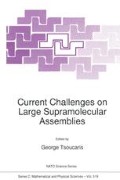Abstract
An accepted scientific theory may be viewed as an intellectual structure universally accepted by a community of scientists and termed the community’s paradigm.1 A mature science, such as Chemistry, is usually governed by a set of paradigms setting the standards for legitimate work within the science it governs. The paradigms, being the set of beliefs driving the intellectual activities, strategies, and methodologies (what can be done, what is worth doing, and how to do it) of the practitioners, coordinate and direct the puzzle-solving activity of normal everyday science. The existence of a paradigm capable of supporting a normal science tradition has been put forth as the most important characteristic that distinguishes a mature science from a developing science or a non-science. The nature of a paradigm is to possess intellectual and physical components and connections that are accepted as necessary and sufficient to describe all observable phenomena.
Access this chapter
Tax calculation will be finalised at checkout
Purchases are for personal use only
Preview
Unable to display preview. Download preview PDF.
References
Kuhn, T. S. (1970) The Structure of Scientific Revolutions, University of Chicago Press, Chicago.
Lehn, J. M. (1995) Supramolecular Chemistry, VCH, New York.
Balzani, V. (ed) (1987) Supramolecular Photochemistry, Reidel, Dordrecht; Balzani, V. and Scandola, F. (1991) Supramolecular Photochemistry, Ellis Horwood, New York; H. J. Schneider and H. Dürr (eds) (1991) Frontiers in Supramolecular Organic Chemistry and Photochemistry, VCH, Weinheim.
Turro, N. J. (1991) Modern Molecular Photochemistry, University Science Books, Mill Valley, CA.
See for reviews: Turro, N.J. (1995) Pure & Appl. Chem., 67, 199; Turro, N.J. Buchachenko, A.L. and Tarasov, V.F. (1995) Acc. Chem. Res., 28, 69.
Tarasov, V.F., Ghatlia, N.D., Buchachenko, A.L. and Turro, N.J. (1992) J. Am. Chem. Soc., 114, 9517.
Buchachenko, A. L. (1995) Chem. Rev., 95, 2507.
Author information
Authors and Affiliations
Editor information
Editors and Affiliations
Rights and permissions
Copyright information
© 1999 Springer Science+Business Media Dordrecht
About this chapter
Cite this chapter
Turro, N.J. (1999). Beyond Supramolecular Chemistry: Supramolecular and Übersupramolecular Aspects of Chemical Structure and Reactivity: Static and Oscillating Electric and Magnetic Fields, Coherence, and Cooperativity. In: Tsoucaris, G. (eds) Current Challenges on Large Supramolecular Assemblies. NATO Science Series, vol 519. Springer, Dordrecht. https://doi.org/10.1007/978-94-011-5284-6_4
Download citation
DOI: https://doi.org/10.1007/978-94-011-5284-6_4
Publisher Name: Springer, Dordrecht
Print ISBN: 978-94-010-6224-4
Online ISBN: 978-94-011-5284-6
eBook Packages: Springer Book Archive

